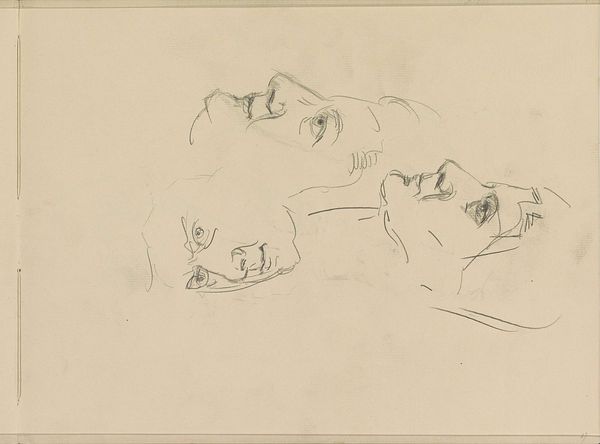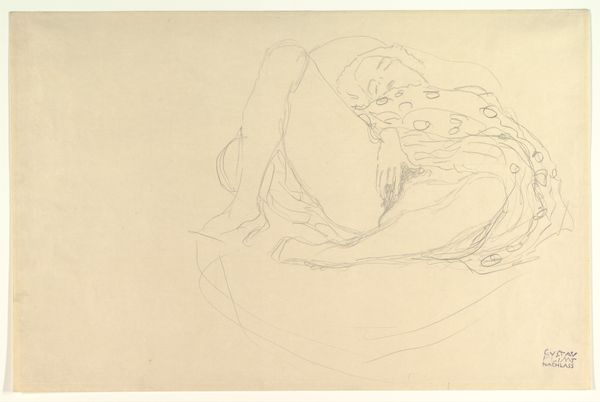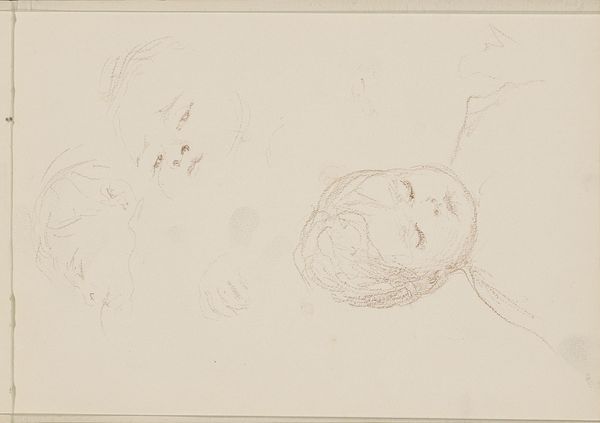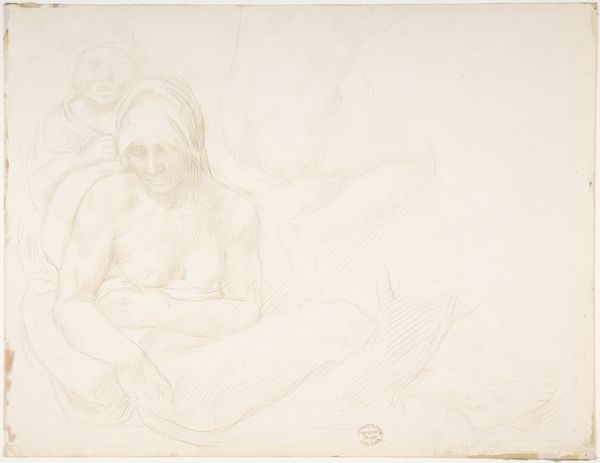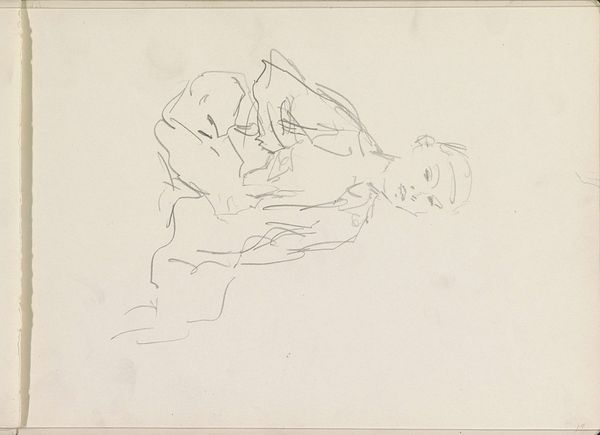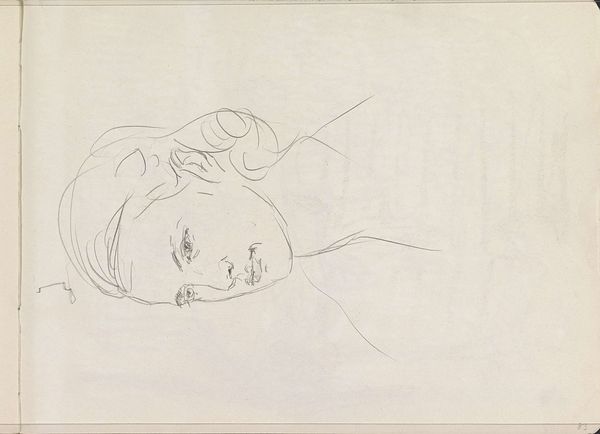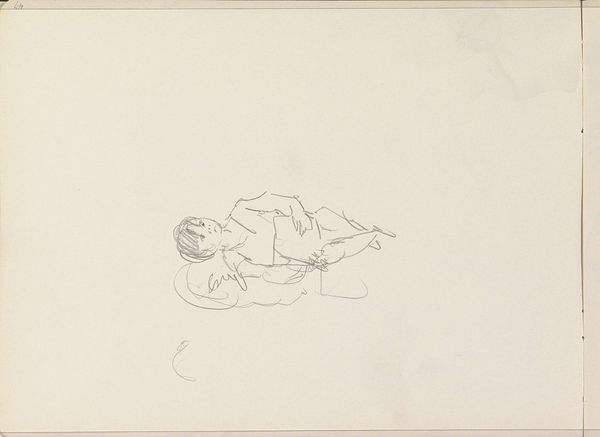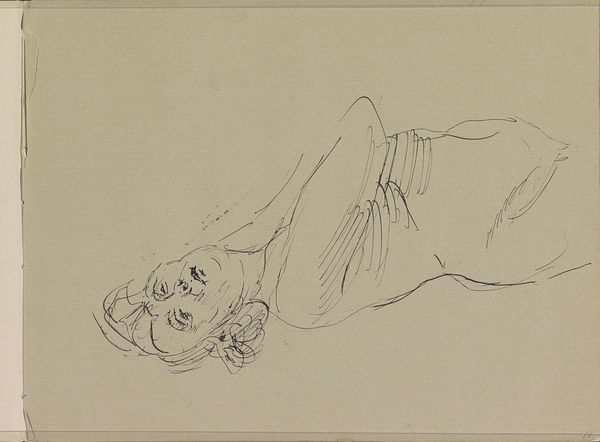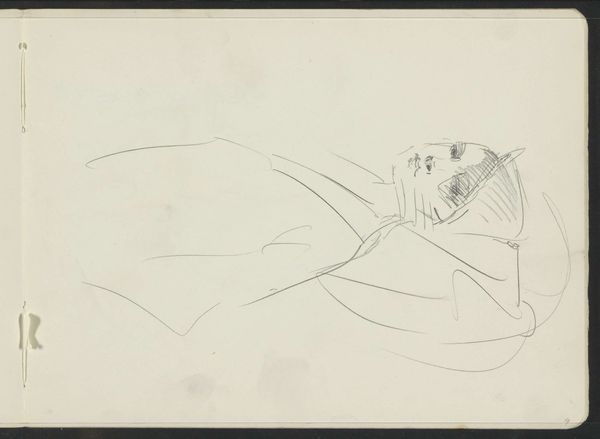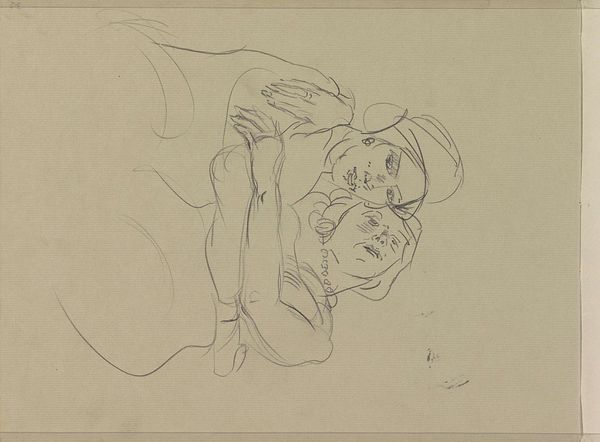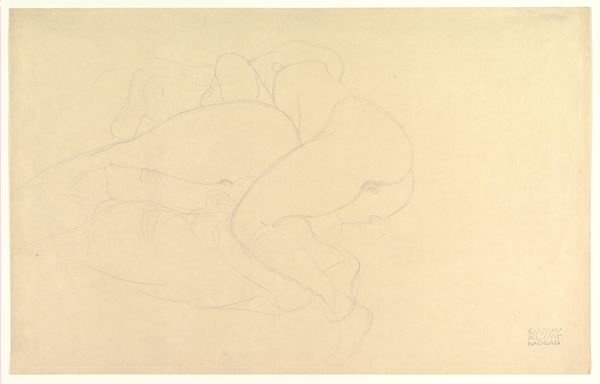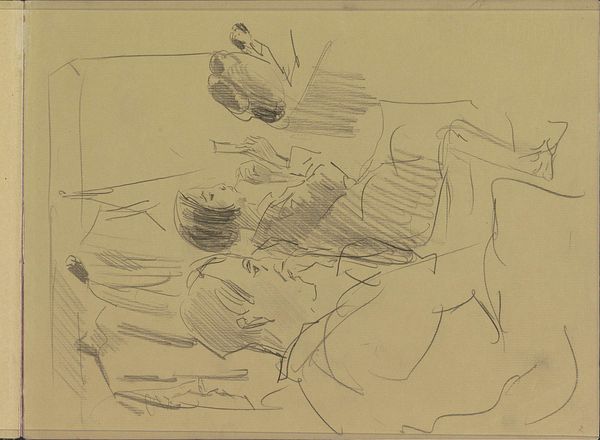
Copyright: Public Domain
Editor: So, here we have "Two Girls at the Table," a drawing in pencil by Ernst Ludwig Kirchner, from around 1936. It feels almost ghostly, this image, like a memory barely held onto. What strikes you about this piece? Curator: It’s interesting you say “ghostly,” because Kirchner's work often dances between visibility and invisibility, doesn’t it? There's a vulnerability in the seeming incompleteness, as though he's revealing a private, fleeting moment. It's more about the feeling than the pure depiction of “two girls,” wouldn't you agree? The fragility of the pencil lines gives the work a sense of being about to vanish, much like a thought. How does this fragility shape the narrative for you? Editor: That’s a great point; it does feel incredibly fleeting! Maybe that's why it also evokes a feeling of intimacy for me. Is it typical for Kirchner's portraits to have this sense of incompleteness? Curator: While known for more vivid works, Kirchner, especially later in his career, often explored this raw, understated approach. It’s as if he was more interested in the essence of the subjects than in a meticulous representation. Consider the time, the mid-1930s: the growing Nazi repression, Kirchner's own artistic and physical struggles… don’t you think that the fragility reflects more than just a style but, perhaps, also a state of being? Editor: That adds another layer of depth to it entirely. So, it’s not just a portrait of two girls, but maybe a portrait of a period on the verge of disappearing, seen through Kirchner’s personal struggles? Curator: Precisely! Art is rarely just *about* what's on the surface. Editor: It definitely makes me appreciate it more knowing the background. Thanks for that! Curator: My pleasure. It’s wonderful to connect with a piece in this way, isn't it?
Comments
No comments
Be the first to comment and join the conversation on the ultimate creative platform.
